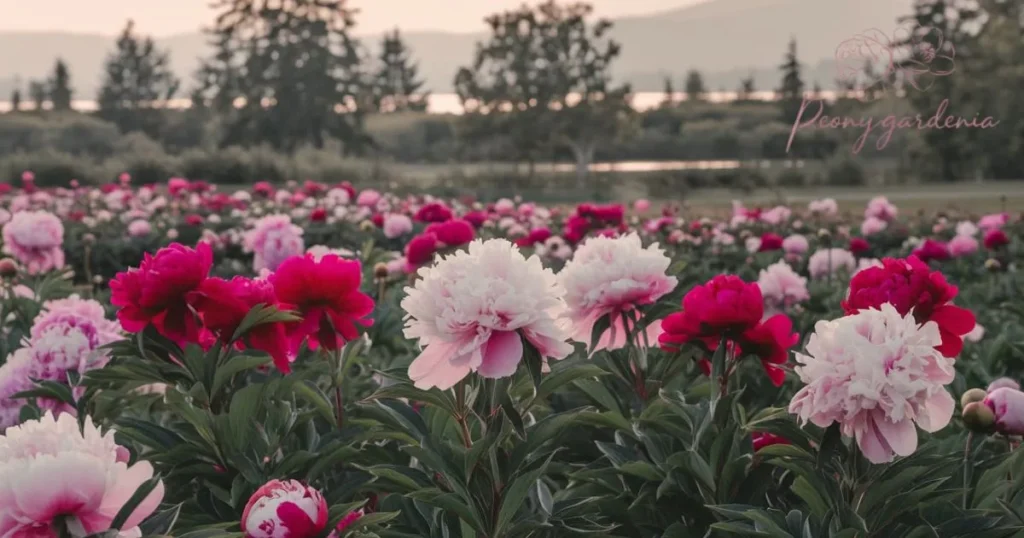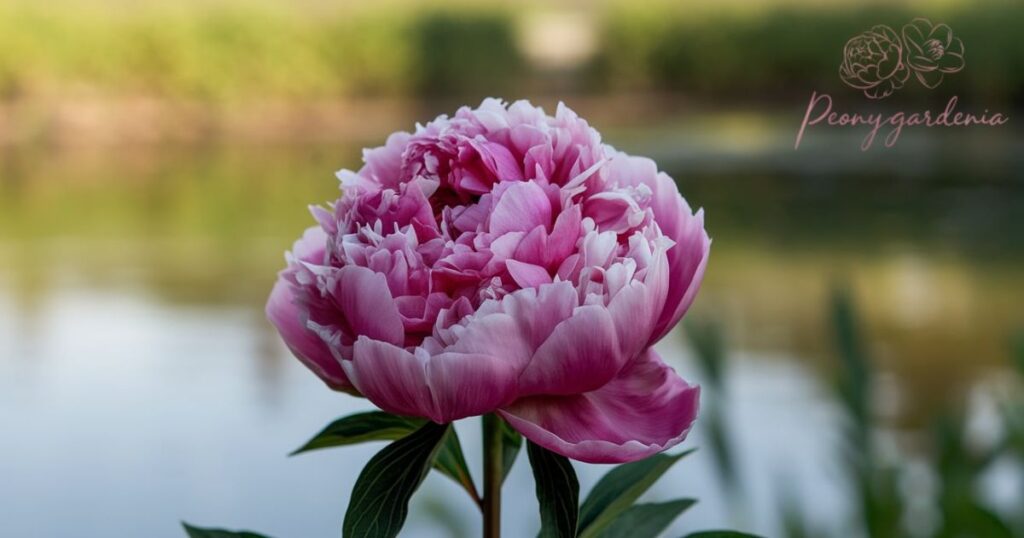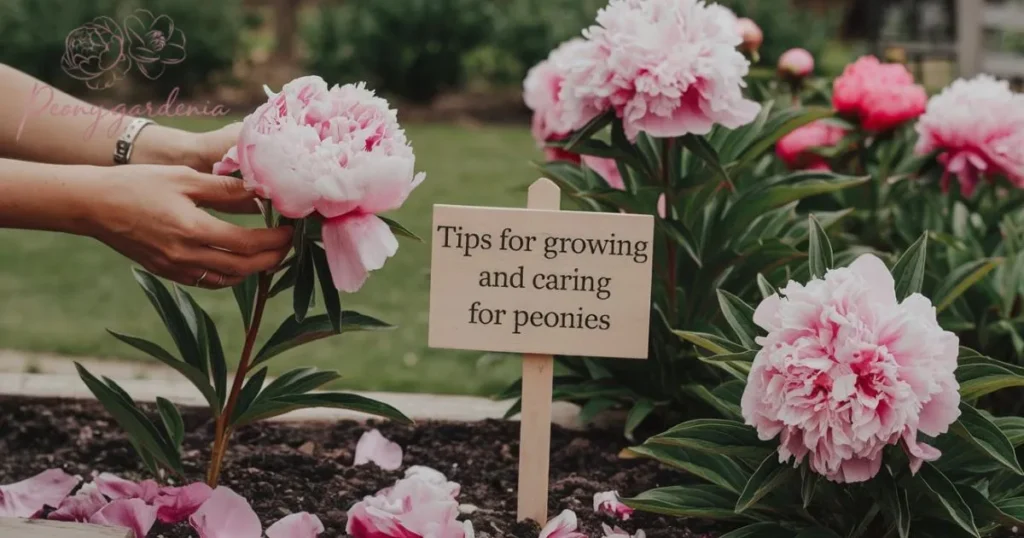Peonies are a beloved flower known for their vibrant blooms and sweet fragrance, making them a favorite in gardens around the world. Understanding when peony season occurs can help gardeners plan for their brief yet stunning display of color.
Peony season typically spans from late spring to early summer, with the exact timing varying by climate. In cooler regions, they bloom in late May or early June, while in warmer climates, the season starts earlier, extending the peony’s beauty for a longer period.
Understanding Peony Season: When Do Peonies Bloom?

Peonies typically bloom from late spring to early summer, depending on the variety and region. Their blooming period can last several weeks, with early, mid-season, and late-blooming varieties extending the display.
Factors such as climate, soil quality, and care practices can influence the exact timing of peony blooms. Gardeners can select varieties suited to their local conditions to enjoy a longer peony season.
Read More: How Long Do Peonies Bloom
Peony Seasons Around the World

Peony seasons vary globally depending on climate. In temperate regions, peonies bloom in late spring to early summer, while in tropical areas, they may bloom year-round with the right care. In cooler climates, like northern Europe, peonies bloom in mid-summer, offering a vibrant display for a limited time.
Asia: The Native Home of Peonies
Asia, particularly China and Japan, is the native home of peonies, where these flowers have been cherished for centuries. In China, the peony, often called the \u201cKing of Flowers,\u201d symbolizes wealth, honor, and beauty. It has deep cultural significance, appearing in traditional art, poetry, and festivals.
Japan also holds the peony in high regard, cultivating both tree and herbaceous varieties for their ornamental and symbolic value. Blooming from April to June, Asian peonies thrive in diverse climates, from temperate regions to mountainous terrains. Their vibrant blooms and rich history make them a source of pride and inspiration in Asian culture.
Europe: Cultivation and Seasonal Highlights
In Europe, peonies thrive in temperate climates, making them a beloved addition to gardens during late spring and early summer. Blooming typically occurs in May and June, with herbaceous and intersectional varieties being the most popular among gardeners. European enthusiasts often plant peonies for their elegant blooms and vibrant colors, which add charm to gardens and floral arrangements.
Their popularity extends to weddings, where they symbolize romance and prosperity. Cultivation practices in Europe focus on well-drained soil, ample sunlight, and careful pruning to ensure healthy plants. The region\u2019s appreciation for peonies keeps these flowers a timeless garden staple.
North America: From Coast to Coast
In North America, peonies bloom across diverse climates, making them a beloved addition to gardens from coast to coast. Typically, the blooming season spans late May to early July, with variations depending on the region.
Northern areas, such as Canada and the northern U.S., often see blooms later in the season due to cooler temperatures. In contrast, southern states enjoy earlier blooms, providing gardeners with flexibility in planting. Peonies thrive in well-drained soil and sunny locations, showcasing their adaptability.
Alaska: The Summer Haven for Peonies
Alaska provides a unique haven for peonies, offering a late blooming season from July to September due to its cool summer climate. This extended season allows Alaskan farmers to supply fresh peonies long after other regions’ blooms have faded, making them a sought-after flower worldwide.
The state\u2019s pristine growing conditions, including long daylight hours and nutrient-rich soils, produce vibrant, high-quality blooms that last longer in vases. Alaska\u2019s peony industry has grown rapidly, supporting local economies while delighting flower enthusiasts globally.
South America: Emerging Interest in Peony Cultivation
In South America, peonies are gaining traction as a sought-after flower, particularly for their beauty and symbolic appeal. Due to the Southern Hemisphere\u2019s opposite seasons, peonies bloom from September to November, offering a unique market advantage.
Countries like Chile and Argentina are exploring peony cultivation, leveraging cooler high-altitude regions to mimic ideal growing conditions. Advances in agricultural techniques, such as controlled environments and soil adaptation, are helping peonies thrive in warmer climates.
Other Regions: Peonies in Unexpected Climates
Peonies, traditionally grown in temperate climates, can thrive in unexpected regions with the right care. In hot, arid climates, selecting heat-tolerant varieties and providing afternoon shade can help peonies flourish. In tropical areas, intersectional peonies or using containers to simulate cold periods can be effective.
Urban environments can pose challenges due to heat and pollution, but raised beds and careful soil amendments mitigate these effects. In high-altitude regions, choosing early-blooming varieties and protecting plants from wind ensures growth. By understanding the unique needs of peonies in various climates, gardeners can successfully cultivate these beautiful flowers in diverse environments.
The Allure of Peonies: Why They’re Worth the Wait

Peonies are a beloved flower known for their lush, vibrant blooms and captivating fragrance, making them a garden favorite. Though they require patience, often taking years to fully establish, the reward is well worth the wait.
Their large, soft petals and array of colors—from soft pastels to deep, rich tones—make them a striking addition to any landscape. Peonies also symbolize romance, prosperity, and good fortune, adding emotional depth to their beauty.
Tips for Growing and Caring for Peonies

To grow healthy peonies, choose a sunny spot with well-drained soil. Plant them in early fall or spring, ensuring the roots are just below the surface. Water regularly, especially during dry spells, and mulch to retain moisture. Prune spent blooms and protect them from harsh winds for better growth.
Watering for Optimal Growth
Watering is essential for peony growth, as they require consistent moisture to thrive. However, overwatering or underwatering can lead to problems such as root rot or poor blooming. To ensure optimal growth, water peonies deeply and evenly, especially during the growing season.
Aim for about 1-2 inches of water per week, either from rainfall or manual watering. The soil should be well-draining, as peonies don’t like sitting in waterlogged conditions. Water at the base of the plant to avoid wetting the foliage, which can encourage fungal diseases. Mulching around the base helps retain moisture and regulate soil temperature.
Pruning and Deadheading: Keeping Peonies Healthy
Pruning and deadheading are essential practices for keeping peonies healthy and promoting strong growth. After peonies bloom, remove spent flowers through deadheading to prevent the plant from putting energy into seed production. This encourages more robust root development and keeps the plant looking tidy.
In late fall or early spring, prune dead or damaged stems to improve airflow and reduce the risk of disease. Be cautious not to cut too much, as peonies require their foliage to nourish the roots. Regular pruning and deadheading ensure peonies remain healthy, vibrant, and ready to bloom beautifully in the next season.
Fertilizing Peonies: Encouraging Vibrant Blooms
Fertilizing p eonies is essential for promoting healthy growth and vibrant blooms. Start by applying a balanced fertilizer in early spring, as the plants begin to sprout, to provide the necessary nutrients for robust growth. A slow-release fertilizer with equal ratios of nitrogen, phosphorus, and potassium works best.
Avoid over-fertilizing, as this can lead to excessive foliage growth at the expense of blooms. In mid-summer, a light feeding with a low-nitrogen fertilizer helps support blooming without encouraging excessive leaf growth. Additionally, incorporating organic compost or well-rotted manure in the soil can enrich the soil and ensure peonies receive consistent nutrition.
Conclusion
Peony season typically occurs in late spring to early summer, with the exact timing varying based on location and climate. In temperate regions, peonies bloom from late April to June, offering a brief but stunning display of flowers. In warmer climates, the season may start earlier, while cooler regions see blooms later, extending the beauty into mid-summer.
Peonies known for their short blooming window, making their season highly anticipated. With proper care and the right varieties, gardeners can enjoy peonies season for a few weeks each year, making it a special time for floral enthusiasts around the world.
FAQs
When do peonies bloom?
Peonies typically bloom in late spring to early summer.
How long do peonies last?
Peonies generally bloom for about 7 to 10 days.
Can peonies grow in hot climates?
Yes, with proper care like shade and irrigation, peonies can thrive in hot climates.
Do peonies need full sun?
Peonies prefer full sun but can tolerate partial shade in warmer regions.
How do you care for peonies after blooming?
Cut back the spent blooms and leave the foliage to die back naturally for the season.









